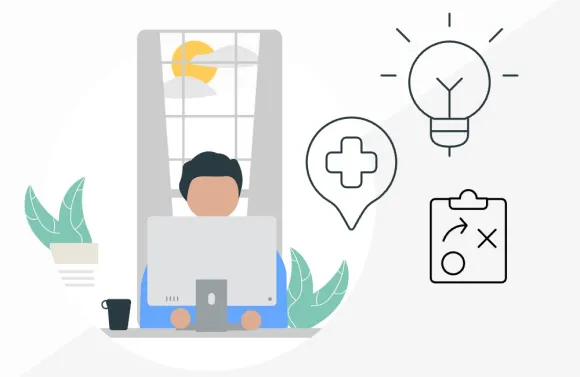
Before jumping into open enrollment (OE) tactics and timelines, you set benefits goals and work success metrics into your plans. Components of an OE strategy vary, but they typically include plans and milestones related to the annual benefits mix, technology platforms, benefits education materials and multimedia communications.
OE can run more smoothly when you're equipped to provide a holistic and connected experience for everyone. Help improve your approach with these 5 ideas:
1. Learn from History
Think back to what worked (and what didn’t) last year. Examine your enrollment and engagement metrics and review your post-OE employee survey results. Apply the learnings to this year so you are continually streamlining the process and working towards achieving your goals. Moving forward, be sure to collect and leverage benefits data because it reveals what's working and what's not, while exposing areas for improvement.
2. Involve Your Internal Stakeholders
Engage employees in planning by deploying a pre-OE benefits survey, tasking a cross-functional team to review education materials for clarity and asking focus groups for feedback on benefit or process changes. Engage leaders by sharing key OE goals and timelines and inviting them to promote activities and deadlines with their teams. (Learn more in The 5 Top Ways to Engage Company Leaders in Employee Benefits Success.)
3. Encourage Active Enrollment
Require employees to learn about and select the best plans and products for their needs. Letting employees “roll over” their current elections may seem simpler, but they could end up with sub-optimal and costlier coverage.
4. Offer Interactive Tools to Make Things Easier
Help employees get more value from their benefits across health and savings by providing personalized decision support tools and communications that enable more confident decisions. A plan comparison document is helpful, but personalized decision support can be an easier way for employees to compare plans, make sense of their options and understand the connection between health and financial benefits.
5. Get Help from Benefits Partners
Work with a third-party to reduce administrative complexity and free up critical resources so your team can focus on delivering winning benefits programs. Partners have a stake in your success, so count on them to provide anything from benefits communications materials to data reports. They can also help facilitate OE education sessions and answer employees’ questions.
The information provided does not, and is not intended to, constitute legal advice; instead, all information and content herein is provided for general informational purposes only and may not constitute the most up-to-date legal or other information. Benefitfocus does not act in a fiduciary capacity in providing products or services; any such fiduciary capacity is explicitly disclaimed. This summary is provided by a consultant to Benefitfocus.com, Inc., and any opinions expressed within do not necessarily reflect those of Benefitfocus.com, Inc. or its affiliates and are not intended to provide specific advice or recommendations for any plan or individual.
Benefitfocus.com, Inc. and its affiliated companies (collectively, “Benefitfocus”) is making available to you the Personalized Decision Support tool offered by SAVVI Financial LLC (“SAVVI”). Benefitfocus is a Voya Financial(“Voya”) business. Voya has a financial ownership interest in and business relationships with SAVVI that create an incentive for Voya to promote SAVVI’s products and services and for SAVVI to promote Voya’s products and services. Please access and read SAVVI’s Firm Brochure, which is available at this link: https://www.savvifi.com/legal/form-adv. It contains general information about SAVVI’s business, including conflicts of interest. CN4407395_0427


